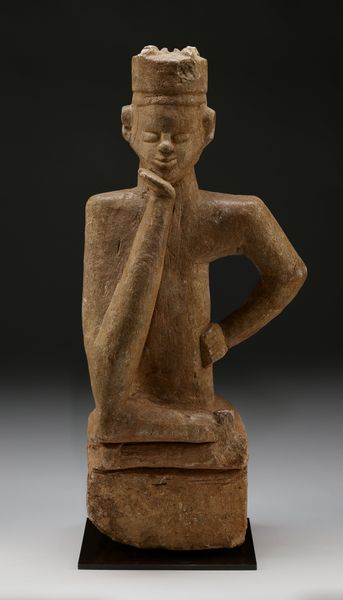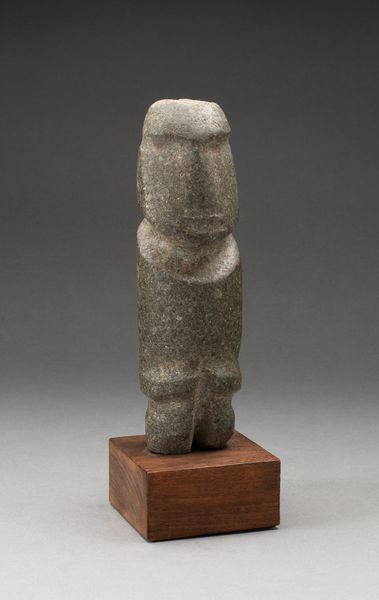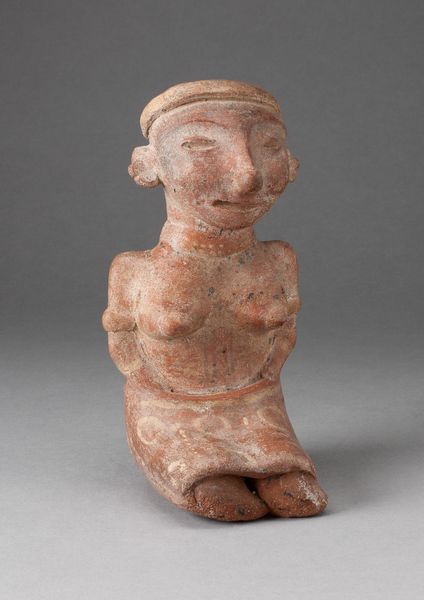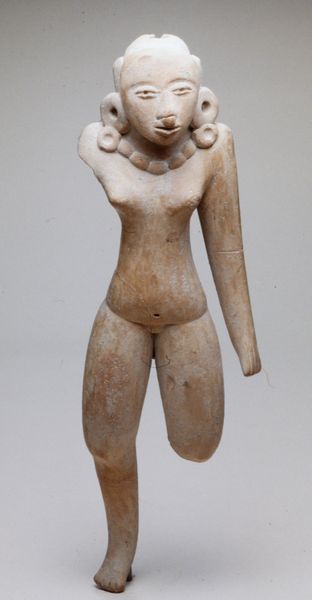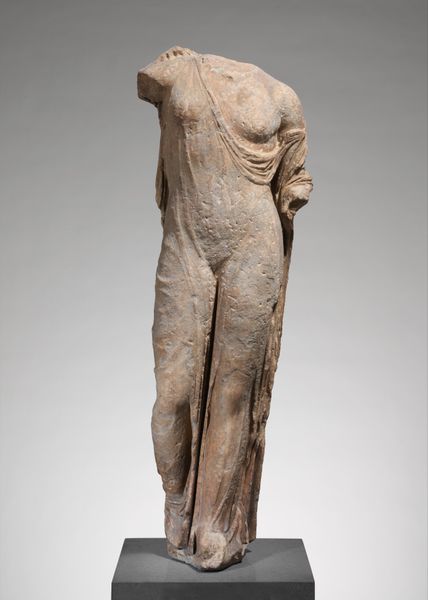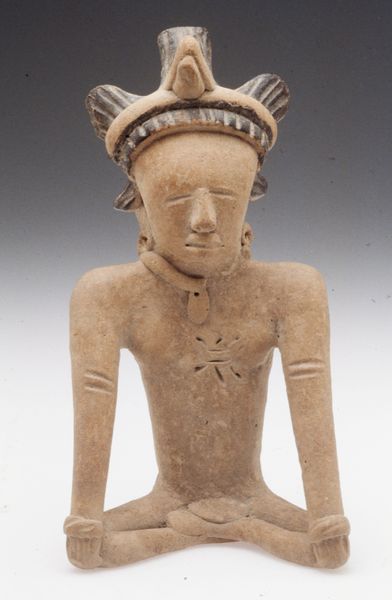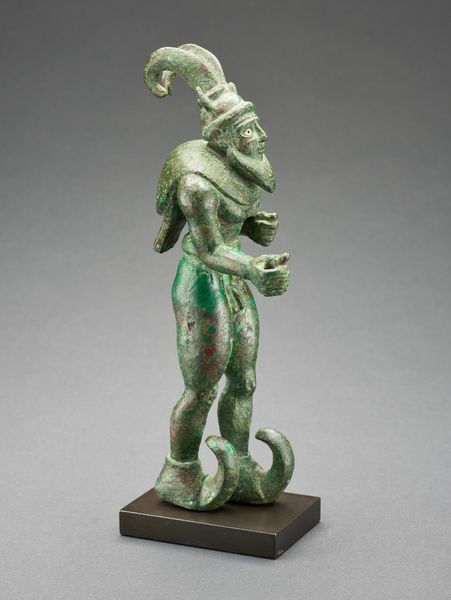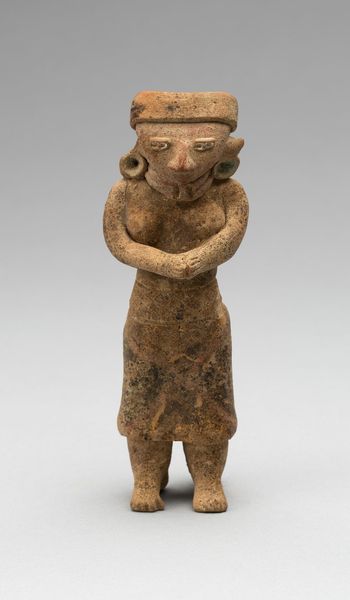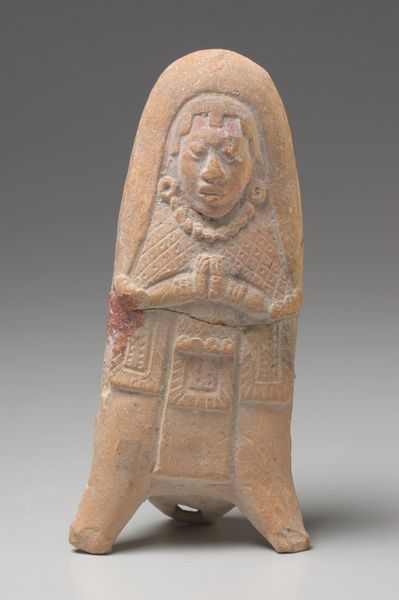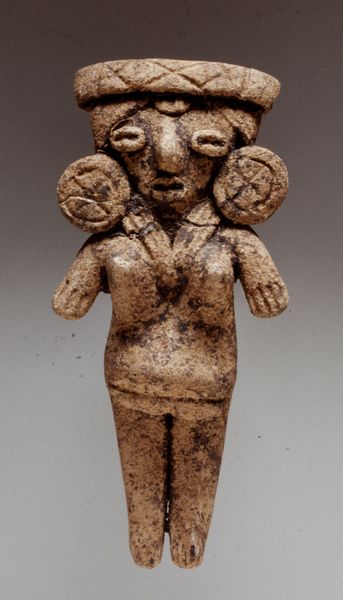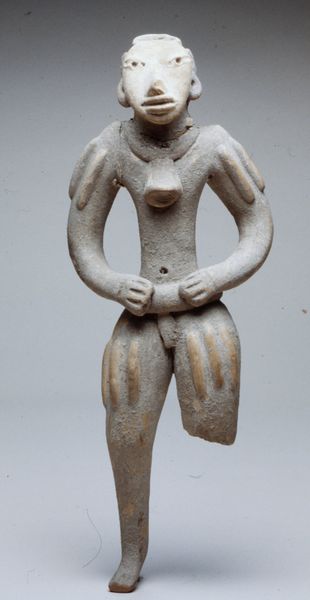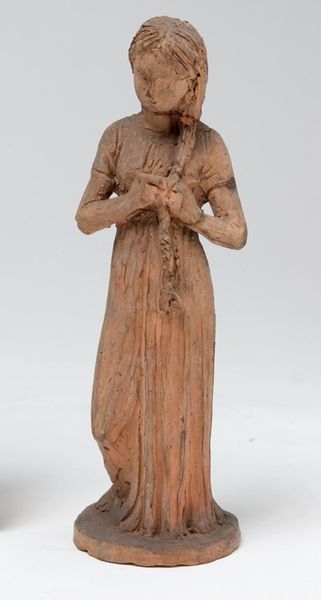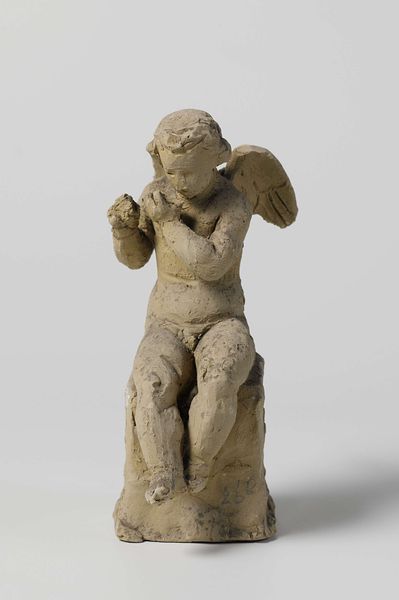
sculpture, terracotta
#
portrait
#
african-art
#
figuration
#
sculpting
#
ancient-mediterranean
#
sculpture
#
terracotta
Dimensions: 19 x 6-3/8 x 6-5/8 in. (48.3 x 16.2 x 16.8 cm)
Copyright: Public Domain
Curator: Here we have the "Kuchamfa-Style Female," a terracotta sculpture believed to be from around the year 500. It's part of the Minneapolis Institute of Art's collection. Editor: My initial impression is one of sturdy grace. It possesses an earthy solidity, combined with this elongated form that gives it an elegant presence. The surface looks relatively coarse, which emphasizes its materiality. Curator: Yes, that texture speaks to the hands that formed it, and to the processes of firing and aging that have shaped its current appearance. Let's look closer at the treatment of the figure’s form; we observe the abstraction in the smooth cylindrical lower portion and the upper emphasis on adornment. Consider also how the open top affects the reading of the piece; does it create a sense of absence? Editor: Precisely, it forces us to confront its constructed nature, how labor shaped the material to achieve this aesthetic object. The lines around what would be the neck seem particularly intentional. What can you tell me about this Kuchamfa style and terracotta’s use here? Curator: Kuchamfa-style works such as this were created by people inhabiting present-day Cameroon, Nigeria, and Chad. Terracotta, as a medium, connects us to the ancient traditions. In some contexts, like that of ancient Greece, the use of terracotta could imply lesser social status than bronze or marble. In others, such as with the Nok culture further west, fired clay works constituted their characteristic art. We might also consider the cultural status conveyed by that open space atop the sculpture: Is it just missing a head? Or was this perhaps designed for some other functional purpose? Editor: Fascinating how its possible utility interacts with its aesthetic qualities. And the lines along the upper portion; Are those ropes or adornments of some kind? How did these individuals source and refine such a material so long ago? Considering these processes enriches its story. The labor invested! Curator: Agreed. The piece's lasting power is a testament to craftsmanship but also material durability. Analyzing its physical properties exposes larger stories about both ancient technology and human symbolic drives. Editor: By appreciating these qualities, both visual and tactile, we enrich our sense of history and skill that made such pieces. Curator: I couldn't agree more. Thank you.
Comments
No comments
Be the first to comment and join the conversation on the ultimate creative platform.
